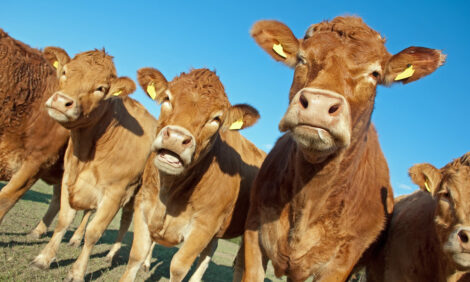



Breeding For Efficiency Is Possible
NETHERLANDS - The aims of a pilot study carried out by the University og Wageninen were (1) to find genetic markers for feed efficiency or residual feed intake, and (2) to determine the relationship between residual feed intake and predicted methane emission, based on dry matter intake and diet composition.One marker was found to be significantly associated with residual feed intake. The results of this study by the Animal Breeding and Genomics Centre have shown that genetic selection based on marker information was more accurate than that based purely on the traditional pedigree information. In a recently started project, the group aims to estimate reliable breeding values for feed efficiency.
Data was used from the former experimental farm ‘t Gen, part of Wageningen UR Livestock Research. Genotypes and feed intake records were available for 588 cows. Reliability of 27 per cent and 14 per cent were achieved respectively for pedigree and marker information and for pedigree information only.
The analyses of the predicted methane emissions have shown that it is possible to decrease methane emissions by selecting efficient cows. Both the phenotypic and genetic correlation between residual feed intake and predicted methane emission were estimated to be approximately 0.70. A negative correlation between predicted methane emissions and milk production was estimated in early lactation.
However, due to the moderate correlations, selection on the basis of higher milk yield will not decrease the methane emissions in the same way. By breeding for improved feed efficiency, a reduction potential of 0.089 Mtonnes can be achieved.
This is 2.3 per cent of the current national methane emissions, expressed in CO2 equivalents. This reduction can be achieved at no extra cost to the dairy farmers as soon as the breeding values are accurate enough to publish.
TheCattleSite News Desk


